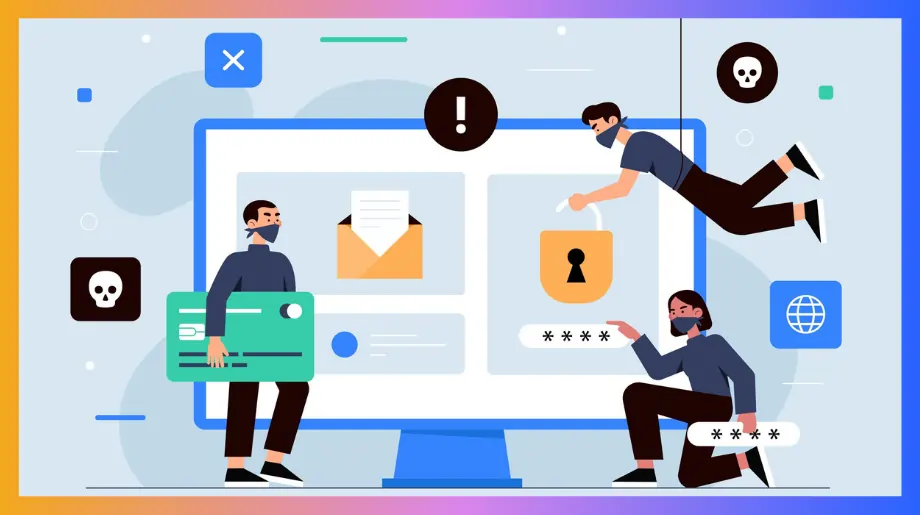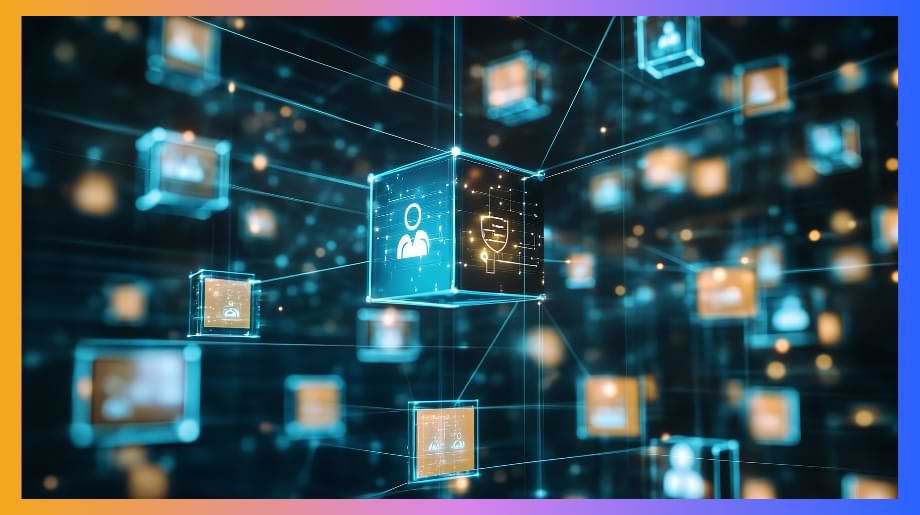No matter the industry - from both a product or internal use standpoint security infrastructure is an indispensable part of a safe digital experience. And while there may not be an immediate threat to your information - protecting it from viruses, unauthorized personnel, and financial exploitation is always worth it.
All said and done, the fact is that both phishing attacks and data breaches are inevitable for growing companies. And for those who need to follow compliance laws, one slip-up allows a huge degree of liability. This is why using the best technology security infrastructure is like insurance - it can be a lifesaver.
What is Infrastructure Security?
Infrastructure security is any system that physically and technologically protects information, tools, hardware, or networks. Moreover, the complexity or layers in your security infrastructure determines the overall safety of your information. This also helps reduce the overall exposure to any security breaches or lawsuits.
This can be as simple as having a security guard to prevent unauthorized access. Still, on a more contemporary basis, it has more to do with protecting data or information that is private, confidential, or sensitive.
To navigate and prevent this from a technological standpoint, systems like IAM software, SIEM software, and data loss prevention (DLP) tools are put in place.
What are the Types of Security Infrastructure Technology
Identity and Access Management (IAM)
Easily the most essential aspect of security infrastructure technology for organizations dealing with large volumes of individuals and employees would be IAM software.
With the integration of features like multifactor authentication, single-sign-on authentication, and role-based identity control (RBAC), threats to security are dramatically reduced.
Advanced IAM features like automated provisioning and de-provisioning remove the issue of unauthorized access from team changes and attrition. On the other hand, it can also be integrated with Identity governance and administration frameworks that ensure only authorized access. This makes compliance with industry standards and norms like GDPR and HIPAA significantly easier.
Security Information and Event Management (SIEM)
SIEM systems collect and aggregate log data from various sources, including network devices, servers, and applications, providing real-time analysis of security alerts generated by hardware and software.
Integrated with other security tools like intrusion detection systems (IDS) and threat intelligence feeds to enhance overall security posture. This combination of real-time monitoring, threat intelligence, and automated response makes SIEM an indispensable technology for safeguarding large-scale IT environments.
It’s also worth mentioning that SIEM systems are also essential for compliance with regulations like GDPR and HIPAA. This type of system can provide detailed audit trails and centralized reporting - making invaluable for compliance. By automating the collection and analysis of security data, organizations can quickly generate the necessary reports to meet regulatory requirements.
Cloud Security - Encryption and Tokenization
In the case of Cloud security, it relies heavily on encryption and tokenization to protect sensitive data stored and processed in cloud environments.
With the help of encryption, data is converted into unreadable formats. This ensures that only authorized users with decryption keys can access it, significantly reducing the risk of data breaches.
Tokenization, on the other hand, replaces sensitive data with non-sensitive equivalents, or tokens, which can be used in place of real data without exposing valuable information. Both encryption and tokenization ensure that cloud-stored data remains secure, while also facilitating compliance with industry regulations like GDPR and HIPAA.
Backup and DRaaS
Backup and Disaster Recovery as a Service (DRaaS) are essential tools to ensure business continuity in the event of data loss or system failures. Backup solutions store copies of important data in secure locations, enabling quick recovery if the original data is compromised or erased somehow.
DRaaS allows this by offering cloud-based disaster recovery services that replicate IT infrastructure and applications. This helps organizations resume work and tasks quickly even in the event of any disaster or unfortunate circumstances.
This type of security Infrastructure can help prevent extended downtime, protect against data loss, and ensure compliance with industry regulations. These benefits make them invaluable for organizations managing sensitive or private information.
Antivirus and Endpoint Security
While it can seem unnecessary for smaller companies, antivirus and endpoint security are essential in safeguarding individual devices like laptops, smartphones, and servers. This type of infrastructure removes vulnerability from malware, viruses, and unauthorized access to the equation.
Antivirus software also provides real-time protection by detecting and removing malicious programs, while endpoint security extends this to monitor and control all entry points across a network.
Advanced endpoint security solutions include features like encryption, firewall management, and intrusion detection to prevent unauthorized access and data breaches. By integrating these technologies, organizations can better protect sensitive information and meet compliance requirements, reducing the risk of cyberattacks targeting vulnerable endpoints.
Security Automation and Anomaly Detection
Security automation and anomaly detection enhance cybersecurity by identifying threats and responding to them almost immediately. Security automation streamlines routine processes, such as incident response, by automatically analyzing and addressing potential threats without manual intervention.
Anomaly detection, on the other hand, uses machine learning and advanced algorithms to identify unusual behaviors or activities within a network that could indicate a security breach. By integrating these technologies, organizations can detect and mitigate security risks faster, ensuring more robust protection against evolving threats while reducing manual workloads and human error.
What are the Four Levels of Infrastructure Security?
Physical Security
Physical security covers all measures put in place to protect physical assets, facilities, and personnel from unauthorized access, theft, or damage. The strength of these security Infrastructure systems is critical to safeguarding your resources and minimizing any potential vulnerabilities.
While traditional methods such as employing security personnel are still common, modern physical security strategies integrate advanced technology like access control systems, surveillance cameras, and biometric authentication to ensure a higher level of protection.
To further enhance these efforts, physical security systems can be connected with IT infrastructure, enabling real-time monitoring, reporting, and response capabilities.
Network Security
Network security refers to any framework designed to safeguard the integrity, accessibility, and confidentiality of data flowing through your organization’s digital network. The complexity of these frameworks determines the strength of your protection and limits your exposure to potential cyberattacks or data breaches.
This could be as simple as using firewalls to block unauthorized access. However, in modern contexts, network security is more about defending against sophisticated threats that target sensitive or proprietary data.
To mitigate these risks, security Infrastructure solutions such as intrusion detection systems (IDS), virtual private networks (VPNs), and advanced encryption protocols are commonly implemented.
Data Security
The strength of data protection measures in place determines how well your organization can defend against potential breaches and avoid legal or financial consequences.
To mitigate risks, organizations often implement security Infrastructure solutions like encryption protocols, data masking, and robust access control systems to ensure the protection of critical information.
This can be as simple as encrypting data to prevent unauthorized access. However, in a modern context, it involves more advanced strategies to safeguard large volumes of data in transit or at rest.
System and Application Security
System and application security involves protecting both the underlying systems and the software applications that run on them from unauthorized access, vulnerabilities, or attacks. The robustness of these security measures determines the resilience of your systems against breaches, ensuring the integrity and reliability of your data and services.
This can be as straightforward as using antivirus software to detect malicious activity. However, in today’s environment, system and application security focuses more on defending against complex threats targeting system weaknesses or software vulnerabilities.
To mitigate these risks, organizations employ tools such as application firewalls, vulnerability scanning, and patch management systems to secure critical assets.
Using Infrastructure Security in Cloud Computing and for Data Protection
As businesses grow, so do the risks of data breaches and phishing attacks, making advanced security measures indispensable. Each technology plays a vital role in protecting sensitive information and ensuring regulatory compliance, from IAM software to SIEM systems, cloud encryption, and backup solutions. By implementing these technologies effectively, organizations can safeguard against both external threats and internal vulnerabilities, ensuring long-term security and business continuity across various sectors and industries. If you’re looking for a robust security infrastructure for your brand why not reach out to the team at Infisign for a free demo.






















